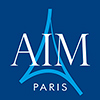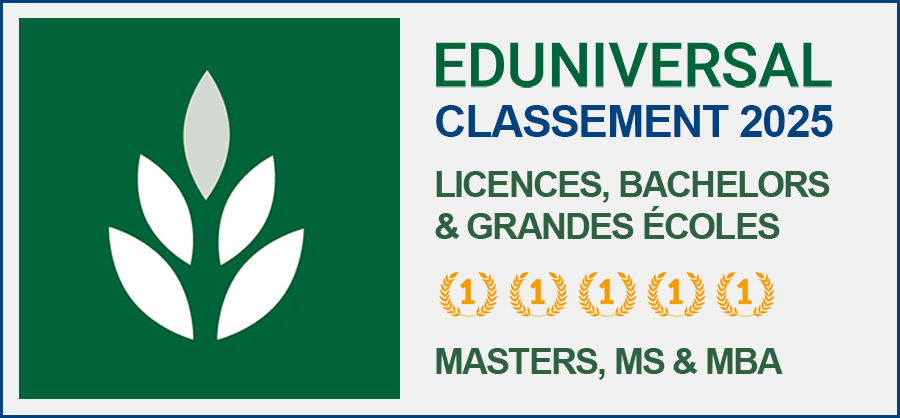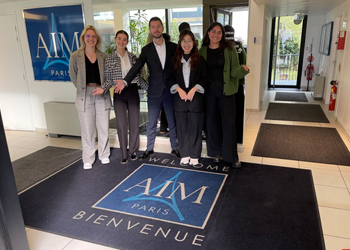Master of Science
Matières enseignées
MASTER OF SCIENCE 2

Feasibility and Valuations in Hospitality investments
Luxury Management
Managerial Accounting
Marketing & Entrepreneurial Development
Purchasing Management
Risk Management
Hospitality Talent Management
Revenue/ Yield Management
Business Plan Elaboration
International Management
Les cours avec certifications professionnelles
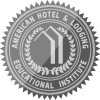
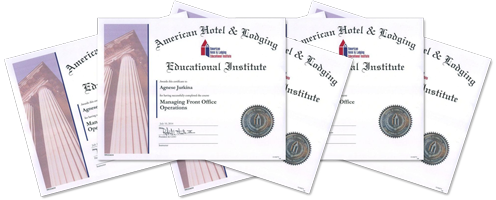
Master of Science 1
PÔLES D’EXPERTISES
AVEC CERTIFICATIONS PROFESSIONNELLES
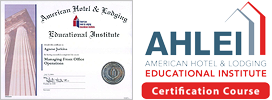
The program presents financial accounting concepts and shows how they apply to the hospitality industry. It incorporates the most recent formats, information, and schedules from the newly-published Uniform Systems of Accounts for the Lodging Industry.
Course Description:

This course presents basic financial accounting concepts and explains how they apply to the hospitality industry.
Objectives:
- Describe the accounting process and the roles that accountants play in collecting and presenting financial information.
- Define the major classifications of accounts (assets, liabilities, equity, revenue, and expenses) and describe specific accounts found within each classification.
- Understand the correct application of debits and credits by analyzing business transactions for a variety of accounting situations.
- Discuss the basis of the double-entry accounting system and identify the normal balances of the various types of accounts.
- Describe the posting, journalizing, and closing processes.
- Identify the purposes and characteristics of specialized journals and subsidiary ledgers.
- Discuss the advantages and disadvantages of the sole proprietorship, the partnership, the corporation, and the S corporation, and describe and compare accounting procedures for each.
- Discuss generally accepted accounting principles and explain the usefulness of each.
- Distinguish between cash basis accounting and accrual accounting.
- List procedures that help ensure internal control of a firm’s cash.
- Discuss how hospitality firms account for bad debt losses.
- Describe accounting procedures involved in notes receivable and notes payable.
- Discuss methods of controlling and accounting for inventory.
- Identify and define the major classifications of adjusting entries reversing entries.
- Define ten steps of the accounting cycle.
- Describe the balance sheet, the income statement, the statement of owners’ equity, the statement of retained earnings, and the statement of cash flows, and discuss the purposes of each.
- Identify the uniform systems of accounts relevant to the hospitality industry.
- Explain the purposes of footnotes to financial statements.
- Identify and describe commonly used depreciation methods.
- Describe accounting procedures used for property, equipment, intangible assets, and other assets.
- Describe procedures used to account for current liabilities and payroll.
- Describe procedures used to account for bonds, leases, and mortgages payable.
- Explain why hospitality firms invest in the securities of other companies, and discuss accounting for investments.
- Identify the kinds of information obtained through vertical and horizontal analyses of comparative balance sheets and comparative income statements.
- Explain ratio analysis and the purposes that it serves for managers, creditors, and investors.
- Identify and define five classes of ratios and explain their significance.
Course Description:
This course presents a systematic approach to human resources management in the hospitality industry. Students will analyze contemporary issues and practices, as well as employment laws that have an impact on the way people are managed.
- The EEOC, EEO laws and affirmative action.
- Disability and Disabilities Act (ADA) and its implications for human resource managers at hospitality operations.
- The importance of job analysis and job design.
- Methods for forecasting labor demand, the advantages and disadvantages of internal and external recruiting, and the functions of a computer-based Human Resource Information System (HRIS).
- The importance of the selection process, explain how managers use application forms and pre-employment tests as selection tools, and the types of selection errors and biases managers must overcome when screening job applicants.
- The purpose of an orientation program, general property orientation and a specific job orientation, specific socialization strategies and approaches.
- The stages of the training cycle and various training methods.
- The functions of performance appraisals, commonly used methods of appraising performance, and legal issues relating to performance appraisals.
- Types of compensation and the major influences on compensation plans.
- The steps and options for establishing pay structures, and summarize current issues in compensation administration.
- Effective incentive programs and four general categories of employee benefits.
- The reasons employees join unions, the statistics and trends of union membership, and the goals and content of major U.S. legislation affecting labor relations.
- Mandatory, voluntary, and illegal collective bargaining issues and common economic and non-economic reasons behind bargaining.
- Major sources of grievances, typical grievance procedures, and outline how to prevent grievances at union properties.
- The history, scope, and goal of the Occupational Safety and Health Act, and the enforcement of OSHA standards and requirements.
- The components and benefits of an employee assistance program (EAP).
- The hospitality industry’s turnover problem, the costs of turnover, and several methods for reducing turnover.
- Approaches to employee discipline.
- The appropriate use of discharge in an employee discipline program and outline an effective exit interview system.
- Ways in which hospitality companies assess and address social responsibility issues, and key factors in assessing whether behaviors are ethical.
TOPICS
- Employment Laws and Applications
- Job Analysis and Job Design
- Planning and Recruiting
- Selection
- Orientation and Socialization
- Training and Development
- Evaluating Employee Performance
- Compensation Administration
- Incentive and Benefits Administration
- Labor Unions
- Negotiation and Collective Bargaining
- Health, Safety, and EAPs
- Turnover, Discipline, and Exits
- Social Responsibility and Ethic

Course Description:
This course provides students with practical skills and knowledge for effective management of food service operations. It presents basic service principles while emphasizing the importance of meeting and, whenever possible, exceeding the expectations of guests.

Objectives:
- Define “moments of truth” and identify staff members needed in a food service operation.
- Summarize typical restaurant server and busperson duties.
- List and discuss the tasks that banquet servers and room service attendants perform.
- Describe the duties of beverage servers and bartenders.
- Identify legal restrictions and liability issues affecting the service of alcoholic beverages.
- Explain how to tell when guests are intoxicated, and outline the steps to take when stopping alcohol service to them.
- Describe the importance of the menu to food service operations and explain how it is planned and designed.
- Identify procedures and issues involved with purchasing, receiving, storing, issuing, and controlling food service operation supplies and equipment.
- Summarize design, decor, and cleaning issues for food service operations.
- Describe the critical role of food sanitation in food and beverage operations, explain the HACCP concept of food safety, and discuss the role of staff members in ensuring food safety.
- Explain how food and beverage managers develop labor standards, forecast food and beverage sales, prepare work schedules, and analyze labor costs.
- Discuss revenue collection and control systems.
- Describe casual/theme restaurants and list examples of ways they give value to guests.
- Explain how banquets and catered events are sold, booked, planned, and executed.
- Discuss room service issues and summarize procedures for delivering room service.
- Describe on-site food service operations in the business and industry, health care, and college and university markets.

Course description:
This course presents a systematic approach to managing Rooms Department in large and luxury international hotels by detailing the flow of business from the reservations process to check-out and account settlement. The course also examines the various elements of effective Housekeeping Management, paying particular attention to the planning and Human Resources Management.
- Summarize front office operations during the four stages of the guest cycle.
- Discuss the sales dimension of the reservations process and identify the tools managers use to track and control reservations.
- List the seven steps of the registration process and discuss creative registration options.
- Identify typical service requests that guests make at the front desk.
- Explain important issues in developing and managing a security program.
- Describe the process of creating and maintaining front office accounts.
- Identify functions and procedures related to the check-out and account settlement process.
- Discuss typical cleaning responsibilities of the housekeeping department.
- Summarize the steps in the front office audit process.
- Apply the ratios and formulas managers use to forecast room availability.
- Explain the concept of revenue management and discuss how managers can maximize revenue by using forecast information in capacity management, discount allocation, and duration control.
- Identify the steps in effective hiring and orientation.
TOPICS
- The Lodging Industry
- Hotel Organization
- Front Office Operations
- Reservations
- Registration
- Front Office Responsibilities
- Security and the Lodging Industry
- Front Office Accounting
- Check-Out and Account Settlement
- The Role of Housekeeping in Hospitality Operations
- Planning and Organizing the Housekeeping Department
- The Front Office Audit
- Planning and Evaluating Operations
- Revenue Management
- Managing Human Resources
Course Description:
 This course is designed to provide students with a solid background in hospitality sales and marketing. The main focus is on practical sales techniques for selling to targeted markets.
This course is designed to provide students with a solid background in hospitality sales and marketing. The main focus is on practical sales techniques for selling to targeted markets.
Objectives:
At the completion of this course, students should be able to:
- Distinguish marketing from sales and identify trends that affect marketing and sales in the hospitality industry.
- Identify and describe the key steps of a marketing plan.
- Summarize the duties and responsibilities of positions typically found in a hotel marketing and sales office.
- Describe the five steps of a presentation sales call.
- Explain the basics of effective telephone communication and describe various types of outgoing and incoming telephone calls related to the marketing and sales function.
- Describe internal marketing and sales.
- Explain the role of advertising, public relations, and publicity in reaching prospective guests.
- Summarize how hospitality properties are meeting the needs of business travelers.
- Explain how hospitality properties are meeting the needs of leisure travelers.
- Describe travel agencies and the travelers they serve.
- Summarize how hotels market and sell to meeting planners.
- Identify considerations for marketing hospitality products and services to international travelers and other special segments such as honeymooners, sports teams, and government travelers.
- Summarize trends affecting the food and beverage industry, and describe positioning strategies and techniques for restaurants and lounges
- Explain how hotels market and sell catered events and meeting rooms.

General objective:
This course is designed to provide students with the principles of supervision as they apply specifically to the hospitality industry.
The purpose is to give students elementary knowledge & practice of management issues, including recruitment, training, performance evaluation, supervisory concerns, effective communication.
The students will learn & practice in class different techniques to be ready to face line-manager responsibilities in the first years of their career in the Hospitality Industry.
Course Description:
1. Identify fundamental supervisory responsibilities.
2. Explain the steps that supervisors can take to speak effectively on the job.
3. Describe how supervisors work with the human resources department to recruit new employees.
4. Explain the function of training within an organization and the supervisor’s role in training.
5. Forecast business volume using the base adjustment forecasting method and the moving average forecasting method.
6. Distinguish coaching from counseling and disciplining.
7. Identify the components of a progressive disciplinary program.
8. List important laws and legal concerns that affect hospitality supervisors.
9. Describe issues supervisors should be aware of as they assume the role of team leader.
10. Explain how supervisors can increase employee participation in department activities.
11. Identify steps supervisors should follow during a meeting with employees in conflict.
12. Distinguish high-priority interruptions from low-priority interruptions, and summarize strategies for dealing with the latter.
13. Describe actions that supervisors can take to minimize employee resistance to change.
Explain why it is important for supervisors to take control of their personal development, and describe how to execute a career development plan.
-
- Week 1: Introduction to supervision in the Hospitality industry
Discover today’s corporate environment: globalization, financial statements, the impact of new technologies on the workplace, staff expectations at work
Understand factors influencing HR practice and decisions: Economic pressures, social pressures
Define the specificity of the Hospitality industry: managing service
- Week 1: Introduction to supervision in the Hospitality industry
-
- Week 2: The components of Management
Define HR Planning and understand its main function: the impact on corporate organization, the different components of Management
Power & Empowerment
Leadership styles and motivation
- Week 2: The components of Management
-
- Week 3 : Effective communication
The communication process
Active listening skills and the listening model
The Management interview process
- Week 3 : Effective communication
-
- Week 4 : Effective communication (Part II)
The communication process
Non verbal communication & body language
Speaking skills
- Week 4 : Effective communication (Part II)
-
- Week 5 : Recruitment & Selection Procedures (Part I)
Defining the vacancy
Job description and job specification
Identifying recruitment sources
- Week 5 : Recruitment & Selection Procedures (Part I)
-
- Week 6: Recruitment & Selection Procedures (Part II)
Recruitment methods to attract applicants in the Hospitality Industry
Job ads
Employer branding
- Week 6: Recruitment & Selection Procedures (Part II)
-
- Week 7: Recruitment & Selection Procedures (Part III)
Resume & Application letter
Interviewing Applicants
The selection decision
- Week 7: Recruitment & Selection Procedures (Part III)
-
- Week 8 : Induction program
The last step of a successful recruitment: inducting new employees
Orientation
- Week 8 : Induction program
-
- Week 10: Training (Part I)
The importance of training
Conditions for successful training
Designing a training program
- Week 10: Training (Part I)
-
- Week 11 : Training (Part II)
Training the trainers
The different learning styles
Training within the Industry
- Week 11 : Training (Part II)
-
- Week 12 : Managing productivity & controlling labor costs
HR Key records & statistics
Personnel information & record card
Regular HR statistics
- Week 12 : Managing productivity & controlling labor costs
-
- Week 13 : Performance appraisal
Different approaches to performance evaluation
The aims of performance evaluation
Steps in the Performance Evaluation Process
- Week 13 : Performance appraisal
-
- Week 14 : Health & Safety Definition of health & safety
Characteristics of the Horeca sector
Legal constraints
Safety issues
=> Chapter 8 : Special supervisory concerns
- Week 14 : Health & Safety Definition of health & safety
-
- Week 15 : Special supervisory concerns
Understanding & preventing work-related stress
Sexual Harassment
Bullying
- Week 15 : Special supervisory concerns
-
- Week 16 : Discipline
Purpose of a disciplinary action
Managing the disciplinary process
- Week 16 : Discipline
-
- Week 17 : Managing conflict
Benefits, sources & types of conflicts
Managing an individual conflict
Dealing with criticism
- Week 17 : Managing conflict
-
- Week 18 : Time management
Time management tools
Setting goals and priorities
Monitoring progress
- Week 18 : Time management
Intended learning outcomes:
At the end of the session, students should be in the position to:
- Explain how to recruit operational staff, from job description to post-acceptance letters.
- Set up induction programs for welcoming new employees.
- Set up training programs at the workplace.
- Conduct a management interview with different management.
- Objectives (performance appraisal, managing conflict, setting objectives, delegation…).
- Explain the impact of different management styles on performance and motivation.
- Describe contemporary issues that Human resources have to deal with.
CONTENT
The certification is based upon four core content areas:
Hotel Industry Analytical Foundations
Hotel Math Fundamentals – the metrics used by the Hotel Industry
Property Level Benchmarking with STAR Reports
Hotel Industry Performance Reports (Trends, P&L, Pipeline and Destination Reports)
Master of Science 2
PÔLES D’EXPERTISES
AVEC CERTIFICATIONS PROFESSIONNELLES

Course Description:
This course provides a thorough look at training by addressing how to assess and analyze the training needs of new and established operations; look upon training and development as an investment; use training tools and techniques; train with technology; measure and evaluate training; and use different training techniques when training employees, supervisors, and managers.
- Describe the effects such factors as the work force, strategic planning, and technology have had on the hospitality training industry.
- Explain how the principles of adult learning apply to training and development in the hospitality industry.
- Identify the variables to consider when calculating the costs of training and the costs of not training, and describe how training directors develop cost-benefit analyses for training and development activities.
- List methods for identifying the training and development needs of a hospitality organization, and explain how to use the information gained from a needs assessment.
- Identify factors to consider when developing training materials and programs, and describe how technology has affected the instructional design process.
- Describe types of exercises and activities that can be incorporated into training sessions.
- Summarize the advantages and disadvantages of various types of technology-based training, and describe the challenges involved in designing and delivering a Web-based course.
- Differentiate between measurement and evaluation, and identify criteria that training directors use to validate training activities.
- Explain the importance of training departmental trainers.
- Distinguish general orientations from departmental/specific
job orientations, and describe the socialization process that continues after the initial orientation sessions. - List the steps in the four-step training method and describe the training issues involved with each one.
- Define mentoring and its role in hospitality training, and distinguish between mentoring and coaching.
- Identify the professional continuing education resources available to complement hospitality industry training and development, describe the training styles and topics frequently used to train supervisors and managers, and explain how supervisory and management training and development can facilitate organizational change.
- Identify and describe various types of executive education programs.
- List the advantages and disadvantages of outsourcing training and development.
CONTENTS
- Training and Development
- Training and Development as an Investment
- Assessing Training Needs
- Instructional Design
- Training Tools and Techniques
- Training with Technology
- Measuring and Evaluating Training and Development
- Training the Trainer
- Orientation and Socialization
- Hourly Employee Training
- Mentoring
- Supervisory and Management Development
- Executive Education
- Outsourcing Training and Development
Prerequisites:

Students should already be familiar with financial accounting concepts and procedures,
Course Description:
This course presents managerial accounting concepts and explains how they apply to specific operations within the hospitality industry.
Objectives:
At the completion of this course, students should be able to:
- State the purposes, contents, and limitations of the balance sheet, and analyze balance sheets using both horizontal and vertical analysis.
- State the purposes, contents, and limitations of the income statement, and analyze income statements using both horizontal and vertical analysis.
- Understand and use the most current version of the uniform system of accounts applicable to the lodging industry.
- State the purposes, contents, and limitations of the statement of cash flows (SCF), and prepare an SCF.
- Use ratio analysis to interpret information reported on financial statements and reports, as well as understand how the interpretation of ratio results varies among owners, creditors, and managers.
- Understand basic cost concepts such as fixed, variable, and mixed costs, as well as calculate the fixed and variable elements of mixed costs.
- Perform a breakeven analysis and use cost-volume-profit analysis to determine the revenue required at any desired profit level.
- Use cost approaches to pricing both rooms and food and beverage items.
- Forecast activity levels by using both qualitative and quantitative forecasting methods.
- Prepare an operations budget and analyze variances of actual results from budgeted plans.
- Manage a hospitality operation’s cash balances, cash flow, and short-term investments in securities, as well as manage an operation’s working capital.
- Implement basic internal control techniques for various accounting functions such as cash receipts, cash disbursements, accounts receivable, accounts payable, payroll, inventories, fixed assets, and marketable securities.
- Use various capital budgeting models such as the accounting rate of return model, payback model, net present value model, and the internal rate of return model.
Course Description:
This course describes how to develop and implement an effective purchasing program, focusing on issues pertaining to supplier relations and selection, negotiation, and evaluation. The course includes in-depth material regarding major categories of purchases.
- Define value and understand its components.
- Establish the need for effective hospitality purchasing in achieving operational goals.
- Discuss the primary methods of purchasing hospitality supplies: ride the market, buy-and-inventory, cost-plus, long-term contracting, and hedging.
- Contrast the roles of line (operating) managers and staff (advisory) personnel as they relate to the purchasing function.
- Describe market channels for distribution of hospitality supplies: source, processor, broker, agent, distributor, and end-user.
- Indicate how business practices involved in the handling and marketing of goods are affected by governmental legislation.
- Suggest how buyers may improve negotiation techniques to gain greater cost advantages.
- Understand the impact that quality and quantity concerns have on purchase decisions.
- Relate the purchasing function to the internal control system of a hospitality operation.
- Discuss the make-or-buy decision and the use of convenience foods in food service operations.
- Learn useful facts regarding quality, yields, pricing, marketing, and distribution of meat, poultry and eggs, dairy products, fish and shellfish, fruits and vegetables, baked goods, and beverages.
- Describe major considerations in purchasing services, non-food supplies, and capital equipment.
SPECIALIZATIONS
- Purchasing Systems: An Overview
- Distribution
- Supplies Selection
- Buyer-Supplier Relations
- Quality and Quantity Concerns
- The Audit Trail
- Evaluation of Purchasing Systems
- Meat Products: An Overview
- Meat Products: Yields and Pricing
- Fish and Shellfish
- Poultry and Eggs
- Dairy Products
- Fruits and Vegetables
- Baked Goods and Miscellaneous Food Products
- Convenience Foods
- Alcoholic and Non-Alcoholic Beverages
- Equipment, Supplies, and Services

Overview
Hospitality managers are charged with making strategic and proactive decisions to increase occupancy rates and total revenue for their properties.
Applying a systematic process to such decision-making can increase their success.
This certificate program in hotel revenue management, developed by renowned revenue management expert Dr. Sheryl Kimes of Cornell’s School of Hotel Administration, provides a holistic view
of the application of hotel revenue management concepts and practices to the hospitality industry.
The courses focus on several high-impact drivers for maximizing revenue: forecasting and availability controls, pricing and distribution channel management, overbooking and group management, and non-traditional revenue management applications. Each course explores a topic in depth, with particular emphasis on the role of strategy in effective revenue management and the practical application of tools and techniques in the hospitality setting.
INTRODUCTION TO HOTEL REVENUE MANAGEMENT
Implementing a revenue management strategy can be one of the most important revenue-generating initiatives available to a hotel, significantly increasing room revenue and profits. This course provides an overview of revenue management applications to the hotel industry designed to inspire a strategic shift to managing revenue per available room (RevPAR).
Revenue management is a systematic process designed to increase revenue by selling the right room to the right person at the right time for the right price. In addition to evaluating different pricing models and applying duration-management strategies, this course provides a foundation for more advanced revenue management courses in forecasting, group management and overbooking, pricing strategy, and application of revenue management techniques to other hospitality-related industries including spas and athletic facilities.
Participants who complete this course will be able to:
- Describe hotel revenue management and its benefits to the organization
- Discuss the strategic levers of hotel revenue management and how they can be manipulated to increase revenue
- Describe hotel revenue management in terms of its component parts and critical considerations
- Recommend non-traditional ways in which revenue management techniques can be applied to increase revenue in the hospitality industry
FORECASTING & AVAILABILITY CONTROLS IN HOTEL REVENUE MANAGEMENT
All successful revenue management strategies are based on the ability to forecast demand accurately and control room availability and length of stay.
This course explores the role of the forecast in a comprehensive revenue management strategy, including the selection of the best type of forecast and the impact of forecasting on other functions such as labor scheduling and purchasing. It presents a step-by-step approach to the mechanics of creating an accurate forecast. Participants learn how to build booking curves; account for “pick-up”; segment demand by market, group, and channel; and calculate error and account for its impact. The course also explores the impact of availability controls, including length-of-stay management, on revenue management and how they can be leveraged.
Participants use Microsoft Excel to practice forecasting and availability control techniques.
Participants who complete this course will be able to:
- Explain the role of forecasting in hotel revenue management
- Create a forecast and measure its accuracy
- Apply length-of-stay controls to their hotel
- Manage availability and make rate recommendations based on demand patterns
PRICING STRATEGY AND DISTRIBUTION CHANNELS IN HOTEL REVENUE MANAGEMENT
Pricing is one of the most powerful tools a hotel can use to increase revenue. This course teaches you how to set the right prices, develop rate fences (differentiate prices by customer type), and use multiple distribution channels to manage price more effectively. You’ll learn about the impact of variable pricing and discounting on revenue management in the context of price elasticity, optimal price mix, perceived fairness, and congruence with positioning and sales strategies.
Channel management is an essential tool for controlling differentiated pricing, maintaining rate fences, and increasing revenue. You’ll explore various approaches to managing distribution channels including direct sales, agencies, the Internet, and opaque pricing channels.
Finally, discussions of best practices and industry case studies help you extend and contextualize your learning experience.
Participants use Microsoft Excel to practice pricing and distribution-channel-management techniques.
Participants who complete this course will be able to:
- Use variable pricing strategies to increase revenue
- Develop effective rate fences
- Manage prices using distribution channels
OVERBOOKING PRACTICES IN HOTEL REVENUE MANAGEMENT
Businesses that accept reservations must cope with the problem of no-shows: customers who make a reservation but fail to honor it. Hotels can protect themselves against revenue lost from no-shows and generate increased revenue by overbooking. This course teaches you how to strategically overbook and how to manage issues associated with overbooking, as well as how to evaluate groups and determine which rates to charge.
This course explores the components of a successful overbooking strategy including no-show forecasting, no-show rates, arrival uncertainty, pricing policies, and cancellation forecasts. It explores the risks of overbooking and presents strategies to minimize costs and mitigate customer impact.
To fully realize your property’s revenue potential, you must be able to manage group reservations. This course teaches you how to create a group forecast and explores yieldable and non-yieldable business and incremental group costs and revenue opportunities. It introduces models to calculate displacement costs and contribution margins to determine which groups are most profitable.
Participants who complete this course will be able to:
- Develop an overbooking approach
- Manage issues associated with overbooking
- Evaluate groups
- Determine appropriate group rates
NON-TRADITIONAL APPLICATIONS OF HOTEL REVENUE MANAGEMENT
Revenue management can be applied to any industry with relatively fixed capacity, time-variable demand, and perishable inventory. This course teaches you how to apply revenue management concepts and practices to hospitality-related industries such as restaurants, meeting spaces, spas, and golf facilities. You’ll learn a step-by-step process to develop, implement, and monitor a revenue management strategy to maximize top-line revenue.
Participants who complete this course will be able to:
- Refine the practice of revenue management to include other aspects of the hotel industry
- Extend the practice of revenue management to other industries
- Lead a revenue management effort, from gathering baseline data to monitoring results post-implementation

Decision Making & Measuring Investment Performance
I – Marketing and Operational Performance
- Pricing and Incentives
- Advertising
- Staffing
- Service Quality
- Room Amenities and Other Operating Decisions
Students learn:
- How to evaluate financial statements.
- Keep those decisions balanced.
- React to competition and the marketplace and measure success.
II – Managerial Accounting Concepts and Measures
The real world environment.
Includes the analysis and interpretation of financial information to make better-informed decisions. This understanding includes reviewing concepts and tools such as:
- Cost/Volume/Profit Analysis
- Flexible Budgeting
- Operating Leverage
- Ratio Analysis
- Revenue Management
- Measurement of Conversion of Revenue into GOP.
Emphasis is placed on the fact that accounting is not just numbers, but rather a powerful tool to better manage people, performance, and profit.
III – Financial Measures of Performance
The Finance segment focuses primarily on issues below Gross Operating Profit (GOP). This includes a discussion of the impact of the owner’s decisions on the hotel’s performance including financial leverage. The analysis concentrates on the economic assessment from the owner’s perspective and presents a clearer understanding of owner’s measures of success and investment criteria including:
- Net Income
- Cash Flow
- Return on Equity (ROE)
- Return on Equity (ROE)
- Return on Assets (ROA)
- Return on Capital Employed (ROCE)
- Growth
- Market Presence

Participants demonstrate step-by-step analytical skills, observe a range of case scenarios and then apply what they have learned to complete their own comprehensive research project.
The training can be personalized related to a geographic area, type of research or related to specific needs.
The program includes five modules:
- Hospitality and Tourism Research
- How to Conduct a Market Study – Analysis of hotel performance for a city.
- How to Conduct an Impact Analysis – Hotel performance related to an event.
- How to Conduct an Economic Analysis – Hotel data correlated to economic data for a country.
- How to Conduct a Feasibility Study – Making the decision to build or not build a hotel, utilizing a feasibility study template.
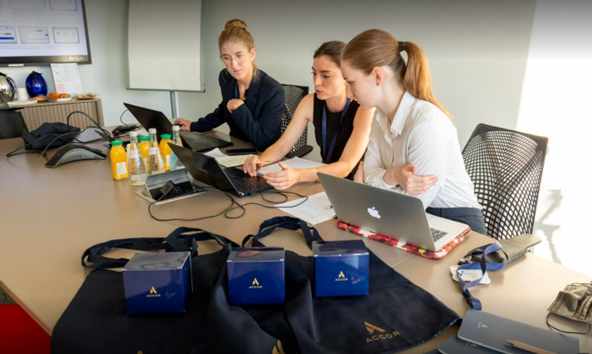
Strategic and Marketing approaches that proved successful in the past may not apply to our new hospitality world: customers’ needs evolve constantly and organizations have to identify “blue oceans” of new demands to generate revenue, profit and growth.
For the Marketing and Entrepreneurial Development course, students are organized in small groups and are confronted with 3 challenges:
– A Creative Challenge by Identifying a profitable New Product Idea, around the Hospitality and Tourism world .
– A Business Challenge by Writing up a full Business Plan from the market need identification to the competitive environment, up to the recommended strategy and all product tactics necessary to achieve the chosen objective. A 3 year P&L projection completes the exercise.
– A Self-assertiveness Challenge by Pitching their group Business Plan in front of a Jury to confirm their ability to present convincingly and answer questions from “could be” Business Angels : thus, a complete preparation to future professional presentations.

N.B. : L’organisation de certains cours de management peut être modifiée en fonction du calendrier de certains “visiting professors”.
Des travaux en équipe

Des travaux d’équipes pour des projets concrets, avec des planifications rigoureuses nécessitant des connaissances approfondies, toutes dispensées durant le programme.
